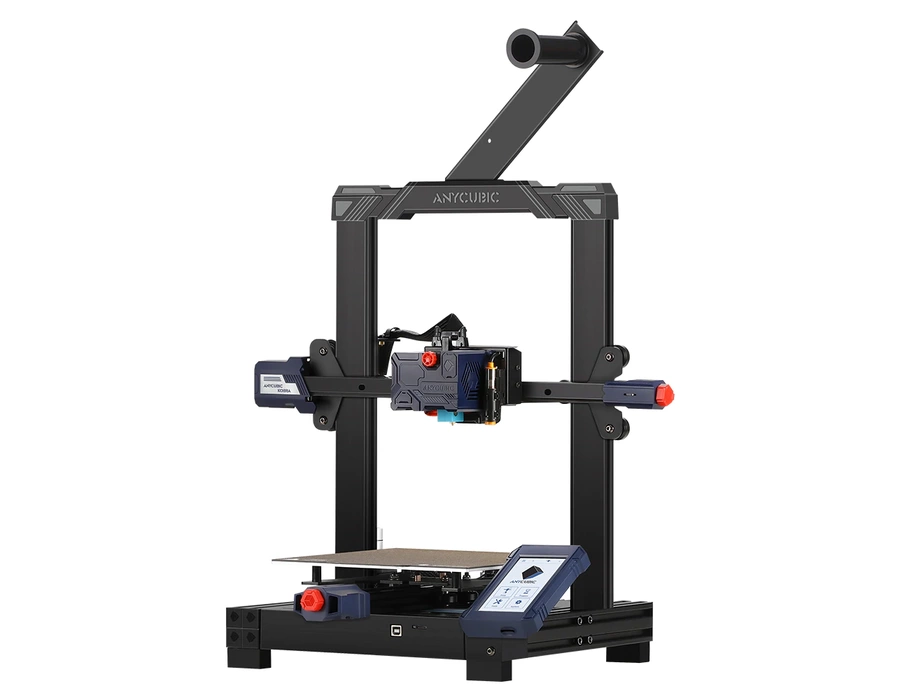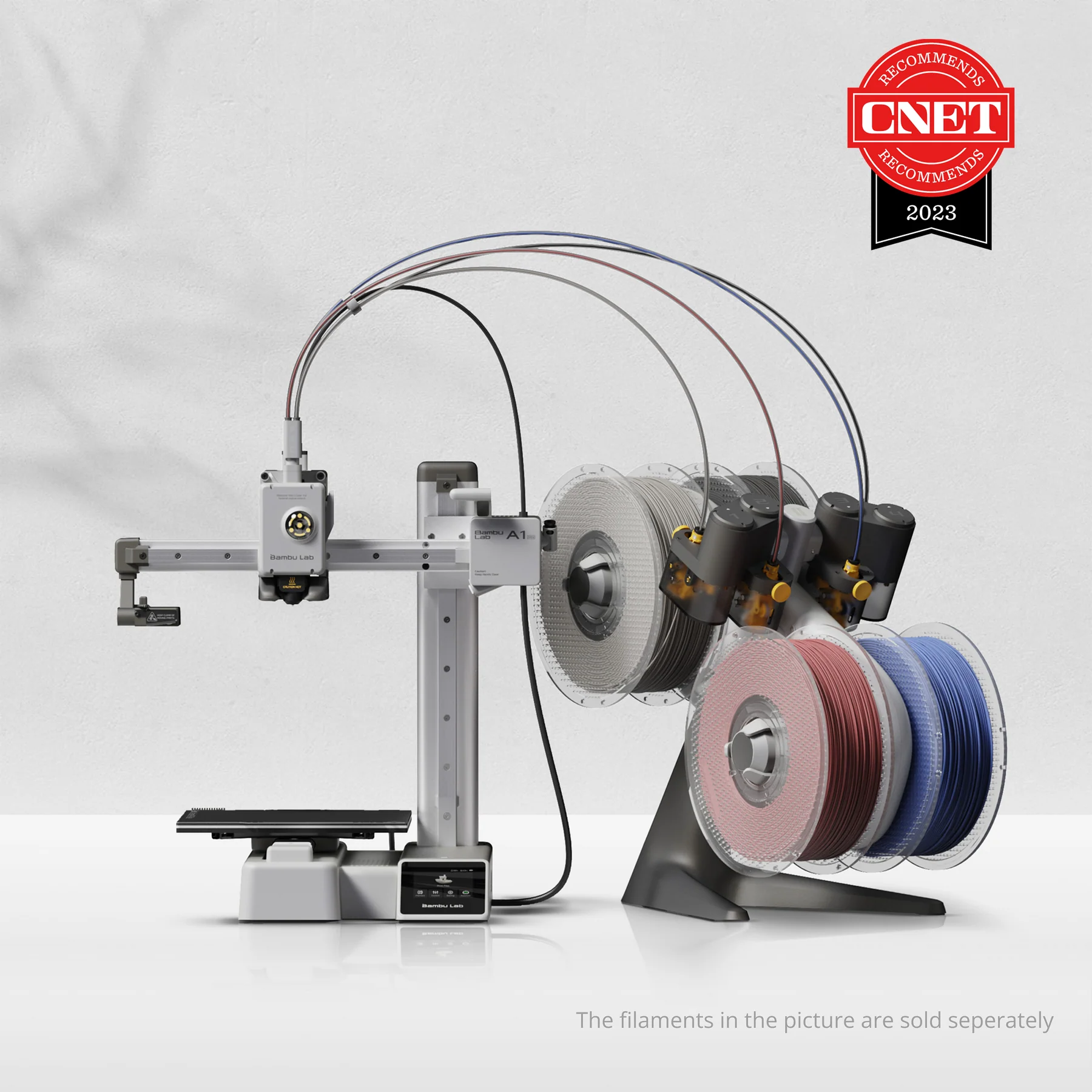Compare Kobra vs A1 Mini
Comparison between the best 3D printers
Choose the best 3D printer at the best price. The cheapest 3D printers are here.
Buy a 3D printer here with 3D Fila.
 |
 |
|
| Model | Kobra |
A1 Mini |
| Printing Material | Filament | Filament |
| Buy Filament for Anycubic Kobra | Buy Filament forBambu Lab A1 Mini | |
| Estimated price | $259,00 | $549,00 |
| Manufacturer | Anycubic | Bambu Lab |
| Release Year | 2022 | 2023 |
| Print Volume [mm] | 220x220x250 | 180x180x180 |
| Printer Size [mm] | 486x430x486 | 315x347x365 |
| Weight [kg] | 7 | 5,5 |
| Power Loss Recovery | YES | YES |
| Enclosed printer | NO | NO |
| Bed Leveling | Automatic | Automatic |
| Filament End Sensor | NO | YES |
| Bed type | Heated | Heated |
| Power supply system | Direct Drive | Direct Drive |
| Standard nozzle | 0,4 | 0,4 |
| Maximum Nozzle Temperature [°C] | 260 | 300 |
| Maximum Bed Temperature [°C] | 110 | 80 |
| Maximum printing speed [mm/s] | 180 | 500 |
| Filament holder | YES | YES |
| Camera for supervision | NO | NO |
| Recommended filaments | PLA, PETG, Tritan, Flex, ABS | PLA, PETG, TPU, PVA |
| Recommended slicers | Cura, Simplify, Slic3r, IdeaMaker | Bambu Studio, Super Slicer, Cura, Prusa Slicer, Orca |
| Maximum Resolution [mm] | 0,1 | 0,1 |
| Processor | 32-bit Silenciosa | |
| Display | Display touchscreen 4,3'' | Touchscreen 2,4'' |
| Power Supply | 110/220V / 400W | 150 W |
| Connectivity | SD / USB | Wifi, Bambu bus, Cartão SD |
| Operating systems | Windows, Mac, Linux | Windows, Linux, Macbook |
| Date of registration in the system | 2022-11-09 | 2024-04-10 |
| Release date | 2022 | 2023 |
| Extra features | The Anycubic Kobra features automatic bed leveling and a direct extruder for easy filament handling. The print bed is coated with PEI on a flexible steel plate, improving adhesion and making prints easier to remove. The printer features sensorless homing and is designed to be easily disassembled for easy maintenance and customization. | The Bambu Lab A1 Mini stands out not only for its impressive speed and automatic calibration, but also for its multi-color printing capability thanks to AMS Lite. This innovative system makes multi-color printing easy, making it accessible to everyone. AMS Lite, specific to the A1 Mini, supports up to four different materials simultaneously, providing creative freedom without complications. With comprehensive sensors for energy monitoring and recovery, a camera for timelapses and Wi-Fi control, the A1 Mini and AMS Lite together offer an intuitive and advanced 3D printing experience, ideal for materials such as PLA, PETG and TPU, and designed for simplicity and fast maintenance with quick-change nozzles. |
| Support for multiple colors and materials (AMS and CFS) | NO | YES |
Notes * |
||
| Cost-benefit | 7 / 10 | 7 / 10 |
| Hardware | 2.1 / 10 | 4.8 / 10 |
| Tela | . | . |
| Print volume | 3 / 10 | 3 / 10 |
| Performance | 1 / 10 | 4 / 10 |
Conclusion |
| In comparing the Anycubic Kobra and the Bambu Lab A1 Mini, both 3D printers offer unique advantages tailored to different user needs. The Kobra stands out for its affordability, generous print volume, and ease of use, making it a solid choice for beginners or hobbyists seeking reliable performance and simplicity in setup. Its features, such as automatic bed leveling and a direct extruder, further enhance user experience while maintaining a low cost. On the other hand, the Bambu Lab A1 Mini, being the pricier option, compensates with advanced capabilities such as higher maximum printing speed, multi-color printing support through AMS Lite, and comprehensive sensor technology. These features cater to more experienced users or those requiring specific functionality for creative projects. Additionally, the A1 Mini's versatility with various materials and enhanced connectivity options, including Wi-Fi, positions it as a more sophisticated tool for serious makers. In summary, the Anycubic Kobra may appeal to those prioritizing cost-effectiveness and basic functionality, while the Bambu Lab A1 Mini is suited for users looking for speed, advanced features, and greater creative flexibility. Ultimately, the choice between these two printers depends on the intended use, budget considerations, and the level of complexity desired in 3D printing projects. |

